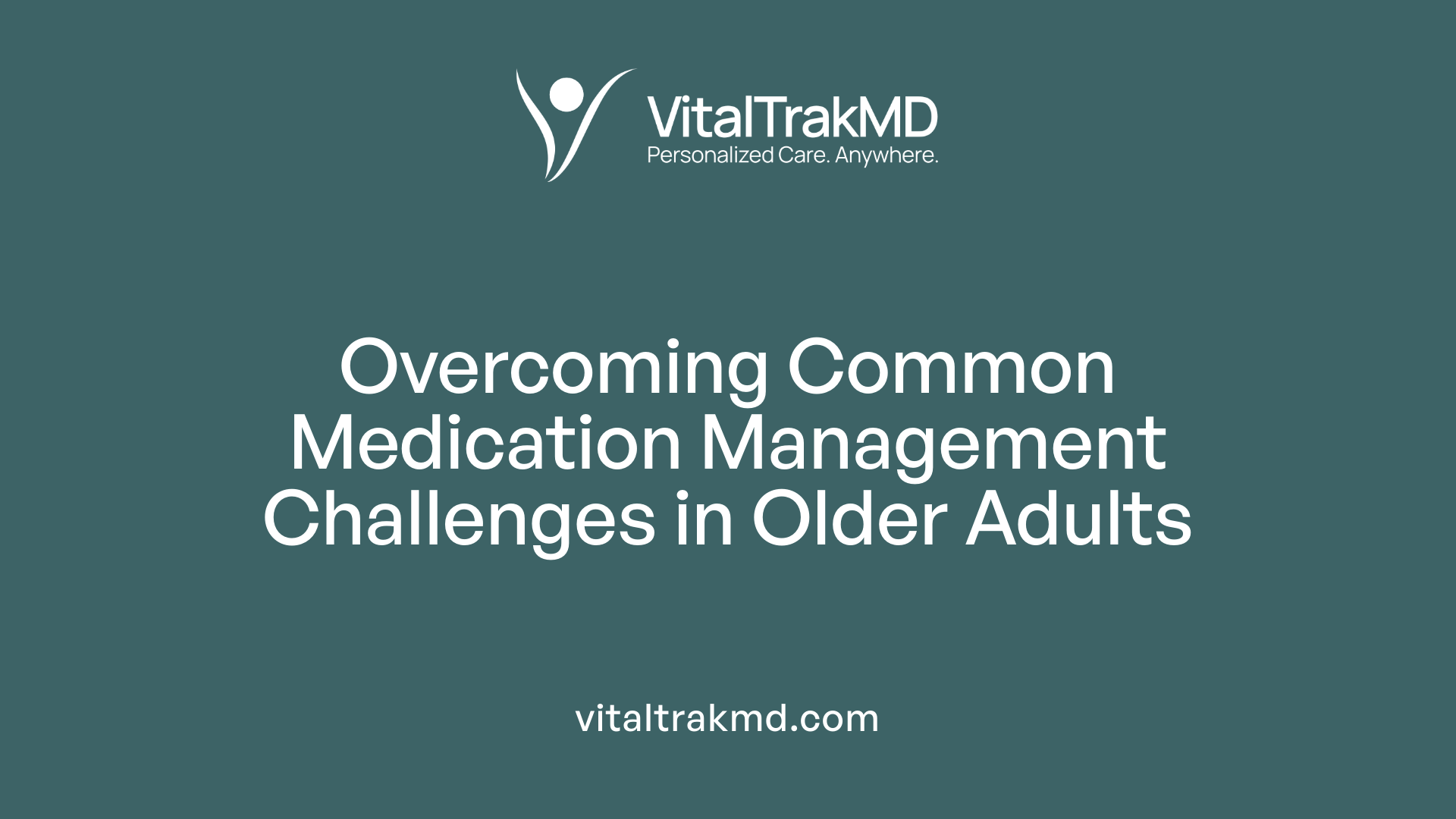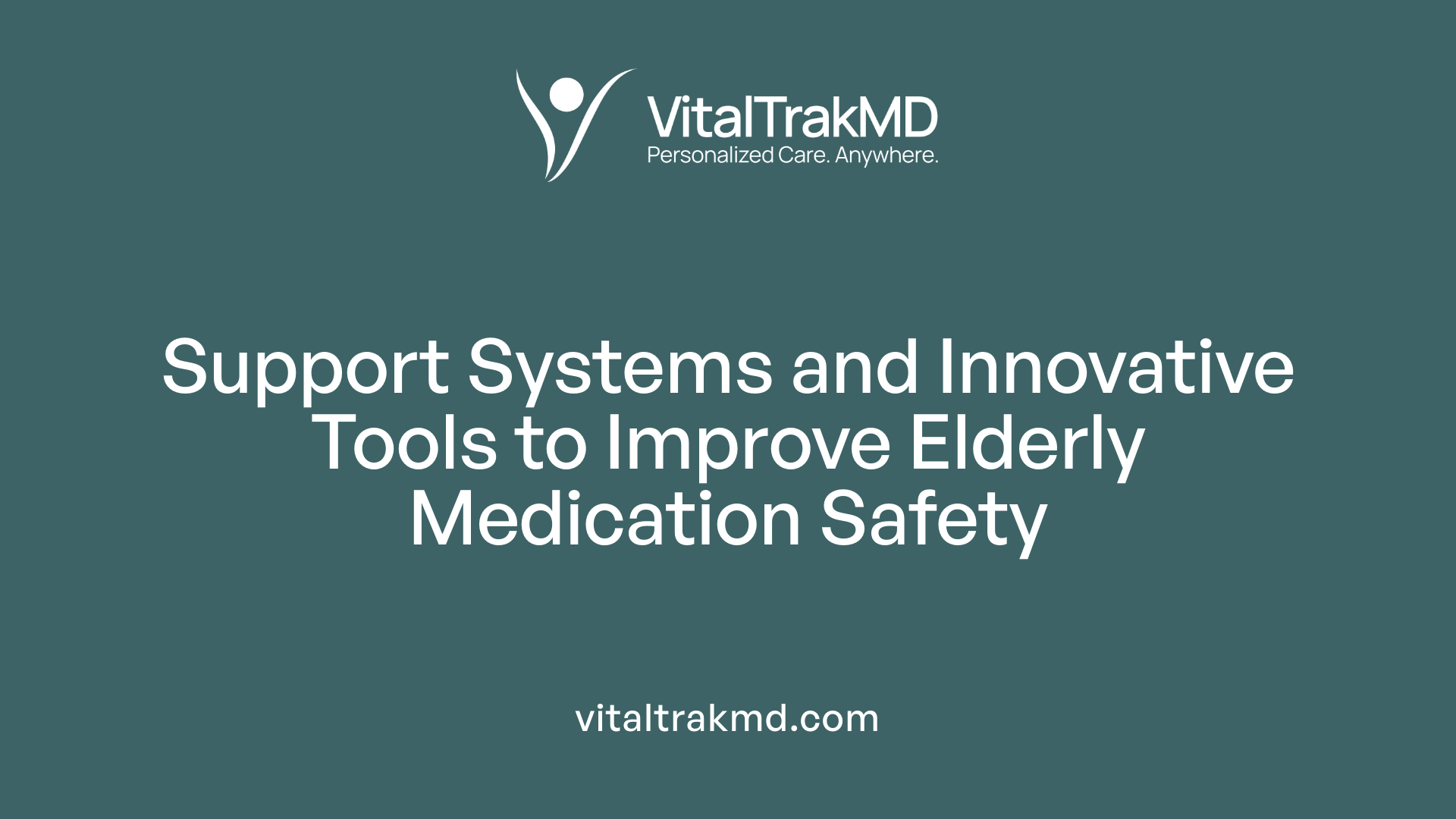Supporting Seniors With Tailored Guidance on Medication Schedules

Evolving Strategies for Safer and More Effective Medication Use Among Older Adults
Supporting seniors in managing their medication schedules is a vital aspect of promoting health, independence, and safety. As medication regimens become increasingly complex due to polypharmacy and chronic health conditions, it is essential to employ tailored, evidence-based strategies that consider individual needs, challenges, and preferences. This article explores effective approaches, resources, and innovations designed to optimize medication adherence and safety for older adults, emphasizing collaborative efforts among healthcare providers, caregivers, and the seniors themselves.
Understanding How Seniors Develop Medication Routines

What methods do seniors use to build their medication schedules?
Many seniors develop their medication routines independently, often without direct guidance from healthcare professionals. They typically rely on repetitive practices tied to daily activities, such as taking pills during meals or before bedtime. Managing both prescription medicines and vitamins or supplements in similar manners is common, with little distinction made between them.
Most seniors prefer using pill cases—77% of participants—over prescription bottles for storage. These pill organizers are usually kept in visible spots around the home, making medications easily accessible and top of mind. Routines are reinforced through multiple cues: visual markers like pill cases and water glasses or contextual triggers such as meal times and sleep schedules.
Some use simple memory aids, like placing pills next to a coffee cup or setting secondary alarms, but few utilize advanced reminder tools; only about 14% of participants used alarms, and none used dedicated adherence devices or apps.
How significant is trial-and-error in medication management?
A notable 59% of participants relied on trial and error to establish their medication routines. Without formal guidance, many seniors experiment to find what works best, adjusting timing, storage, or the method of taking medications based on their experiences. This approach, while adaptive, can lead to inconsistencies especially when routines are disrupted.
Disruptions such as travel or unexpected daily schedule changes often cause nonadherence, which is a major challenge.
Do seniors manage prescription medications differently from vitamins and supplements?
Participants often treat prescriptions and supplements similarly, without making clear distinctions. They tend to think about both in terms of their appearance or chemical name, sometimes viewing vitamins as equivalent to prescribed drugs. This lack of differentiation can impact adherence and the understanding of medication importance.
How can understanding these behaviors inform support strategies?
By recognizing that many seniors develop routines independently and through trial-and-error, healthcare providers and caregivers can design targeted interventions. Making routines easier to establish and maintain—such as providing user-friendly pill boxes, visual cues, or simple reminder systems—can significantly improve adherence.
Encouraging regular medication reviews with pharmacists, offering clear storage instructions, and educating about the differences and importance of various medications are crucial steps. Since many seniors are open to using technological aids like sensor-based adherence devices, integrating these tools can bridge gaps caused by routine disruptions.
In summary, understanding how seniors manage their medications is vital to providing effective support. Promoting organized storage, routine consistency, and leveraging technology can foster safer and more reliable medication practices among older adults.
Popular Storage Solutions and Routine Triggers
 Many seniors prefer storing their medications in accessible, visible locations around their homes, which helps them remember to take their pills. According to recent studies, up to 86% of seniors keep their medications in sight, often in designated areas that are easy to reach. Pill organizers, especially weekly pillcases, are widely used (77%) as effective tools to separate doses by day or time, reducing confusion and pill misplacement.
Many seniors prefer storing their medications in accessible, visible locations around their homes, which helps them remember to take their pills. According to recent studies, up to 86% of seniors keep their medications in sight, often in designated areas that are easy to reach. Pill organizers, especially weekly pillcases, are widely used (77%) as effective tools to separate doses by day or time, reducing confusion and pill misplacement.
Participants often rely on visual cues as triggers to remind themselves to take medications. Common signals include seeing their pill cases, a glass of water, or associating medication times with daily routines like meals or bedtime. These cues create habitual patterns that foster adherence even without direct reminders.
However, disruptions in routines—such as travel, unexpected changes in daily activities, or health setbacks—can lead to missed doses, which compromise safety and treatment effectiveness. Many seniors struggle with maintaining consistency when routines are interrupted.
Despite a preference for physical aids, few seniors (14%) currently use electronic reminders or alarms, and none employ adherence gadgets or smartphone apps. Nonetheless, there is a notable interest among seniors, especially those living alone, in devices equipped with sensors or alarm features that prompt medication intake when routines are disrupted.
Healthcare providers often overlook the importance of guidance in medication management, which underscores the necessity for personalized strategies. Supporting seniors with educational interventions, proper storage techniques, and routine planning can significantly improve adherence and health outcomes.
| Storage Preference | Usage Percentage | Additional Details |
|---|---|---|
| Pill cases | 77% | Portable, color-coded, lockable options available |
| Prescription bottles | Data not specified | Common but less organized than pill cases |
| Storage location | 86% | Visible, accessible, away from heat and humidity |
| Routine Trigger Type | Common Examples | Impact on Adherence |
|---|---|---|
| Visual cues | Pill cases, water glass | Reinforces habitual pill-taking |
| Daily activities | Meals, bedtime | Ties medication intake to familiar routines |
| Alarms/reminders | Few participants used this | Only 14% employed time-based reminders, indicating room for growth |
Overall, integrating familiar routines, strategic storage, and emerging technological solutions can greatly assist seniors in managing their medications safely and effectively.
Challenges in Medication Management for Seniors

What are common challenges faced by seniors in managing their medications?
Managing medications can be complex and fraught with obstacles for older adults. Many seniors experience memory issues, making it difficult to remember whether they have taken their dose, leading to missed doses or accidental double dosing. Physical limitations, such as arthritis or vision impairments, can hinder their ability to open pill bottles, read tiny labels, or manipulate small objects.
Polypharmacy, the concurrent use of multiple medications, is widespread among seniors, often exceeding five drugs daily. This increases the risk of adverse drug interactions, side effects, and confusion, particularly when healthcare providers are not fully coordinated. Moreover, these individuals often lack comprehensive understanding of each medication's purpose, potential interactions, and side effects, which affects their adherence and safety.
Barriers such as transportation issues, long pharmacy waits, or high medication costs can further complicate consistent medication management. Many seniors rely on informal routines and have limited access to safeguards like digital reminders or adherence devices, making routine disruptions due to travel or unexpected events particularly problematic.
Furthermore, healthcare systems tend to underutilize deprescribing strategies—medical plans aimed at reducing unnecessary or risky medications—that could diminish polypharmacy risks. Addressing these challenges involves developing tailored strategies that improve understanding, accessibility, and coordination of medication routines, ultimately supporting seniors' independence and health.
Resources, Interventions, and Support Systems

What resources and interventions are available to improve elderly medication management?
Supporting medication management in older adults involves a variety of resources and tailored interventions. Community programs and pharmacy services play a vital role by offering specialized support such as blister packaging, automatic refills, medication synchronization, and home delivery services. These initiatives help reduce the complexity of managing multiple medications and ensure timely adherence.
Educational tools, including easy-to-understand medication guides, large-font medication lists, and counseling sessions, empower seniors to better understand their treatments. Modern technology also offers promising solutions; smartphone apps with reminder alerts, smart pill bottles that signal when doses are missed, and talking medication dispensers make adherence simpler.
Healthcare professionals and caregivers are essential in fostering safe medication use. Regular medication reviews using tools like the MedMaIDE™ and Medi-Cog, combined with thorough medication reconciliation, identify potential problems early. Pharmacists can provide valuable education on drug interactions and side effects, and caregivers can assist with daily routines. Additionally, national health programs and local organizations promote safe medication practices by offering informational resources, support groups, and assistance programs.
When combined, these multi-layered supports help reduce medication errors, prevent adverse drug interactions, and improve overall medication management, promoting safety and independence for older adults.
What are best practices for ensuring medication safety and adherence in seniors?
Ensuring medication safety and adherence involves consistent strategies focused on simplicity, proper management, and communication. Regular medication reviews with health providers or pharmacists—using criteria like the Beers or STOPP/START criteria—help identify inappropriate or risky medications.
Simplifying drug regimens, such as switching to extended-release formulations and reducing pill burden, decreases errors and nonadherence. Utilizing tools like pill organizers, dose-dispensing aids, and digital reminders—such as app alerts or smartwatch notifications—supports routine medication intake.
Proper medication storage in cool, dry, and secure places, along with timely disposal of expired drugs, helps prevent misuse. It is crucial for healthcare providers to communicate clearly, adapting instructions to patients' health literacy levels and cognitive abilities. Engaging caregivers in medication planning and adherence offers additional safety.
Coordination across healthcare providers ensures treatments are current and adjustments are implemented promptly. Electronic health records and shared medication lists facilitate this communication. Together, these practices optimize medication safety, reduce errors, and improve adherence, fostering better health outcomes for seniors.
Risks and Outcomes of Poor Medication Management in Seniors
What risks are associated with medication management in older adults?
Managing medications effectively is crucial for seniors, but improper practices can lead to serious health risks. Older adults are particularly vulnerable to adverse drug reactions, which can cause symptoms such as dizziness, confusion, falls, and even hospitalization.
Polypharmacy, or the use of multiple medications, is common among seniors, especially those with chronic conditions like hypertension, diabetes, or heart disease. This increases the chance of harmful drug interactions, where medications interfere with each other’s effectiveness or produce dangerous side effects.
Drug interactions can involve prescription drugs, over-the-counter remedies, and supplements. For example, blood thinners like warfarin can interact with vitamin K supplements, reducing effectiveness or increasing bleeding risk. NSAIDs combined with antihypertensive drugs can impair blood pressure control.
In addition, seniors are more prone to side effects such as cognitive decline, delirium, or falls, which can severely impact independence and safety. Age-related changes affect how their bodies absorb, distribute, and metabolize medications, often leading to higher susceptibility.
Poor adherence to medication regimens is another concern, stemming from confusion, difficulty reading labels, or forgetfulness. Lack of awareness about the purpose of medications and potential adverse effects compounds these issues.
Physical and cognitive impairments further increase the chances of medication errors or accidental overdose. Limited mobility or visual impairments can make it difficult to manage and store medications properly.
Communication gaps between healthcare providers and caregivers also contribute to ongoing medication problems. Without regular review and adjustments, seniors might continue inappropriate or unnecessary medications.
This cumulative risk elevates the incidence of hospitalizations, emergency department visits, and overall deterioration of health. It underscores the importance of regular medication reviews, adherence support, and following established guidelines such as the Beers Criteria to minimize these dangers.
Implementing comprehensive medication management strategies—including use of pill organizers, digital reminders, clear labeling, and routine consultations—can drastically reduce the risks associated with medication mismanagement in seniors. Ensuring safety not only improves health outcomes but also helps maintain independence and quality of life.
Promoting Safe and Personalized Medication Practices
Ensuring effective medication management for seniors requires a multifaceted approach that encompasses education, organization, technological support, and professional oversight. Tailored strategies such as simplified regimens, optimal storage solutions, routine medication reviews, and the use of adherence tools can significantly improve safety and compliance. Collaboration among healthcare providers, pharmacists, caregivers, and seniors themselves is vital to identify and address individual challenges, prevent adverse interactions, and streamline medication routines. Investing in community resources, innovative technologies, and ongoing caregiver support can help maintain independence, reduce hospitalizations, and enhance overall quality of life. By adopting these best practices, we can foster safer, more effective medication adherence tailored to each older adult’s unique needs.
References
- Medication Management Strategies to Support ...
- Managing Medications for Seniors - Sinai Health System
- Practical Medication Management for Seniors - LifeChoice
- Medication Management of the Community-Dwelling Older ...
- The Caregiver's Guide to Managing Medications for Older ...
- Medication Management for Seniors - Hopscotch Primary Care
- Simplifying Senior Medication Management - Denver
- 5 Medication Safety Tips for Older Adults
- Taking Medicines Safely as You Age
Recent articles
Want to Feel Better and Live Healthier?
Join hundreds of patients taking control of their health with personalized care that fits their life – not the other way around.
Rated 4.8/5 by 32+ customers







